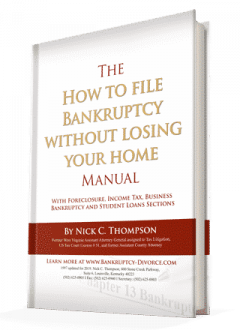When it comes to bankruptcy, one crucial factor to consider is how the ownership of assets is structured. Understanding how joint tenancy and tenancy in common affect real property is crucial during bankruptcy.
Joint tenancy and tenancy in common are two common forms of asset ownership, and the difference between them can have significant implications during bankruptcy.
In this article, I will provide a comprehensive guide to joint tenancy vs tenancy in common during bankruptcy for Louisville, KY residents.
Understanding Property Ownership
Property ownership is a fundamental concept in real estate law, and understanding the different types of ownership structures is crucial for making informed decisions about your assets. Joint tenancy and tenancy in common are two common ways to hold title to a property, each with distinct legal implications.
In joint tenancy, two or more individuals own the property together with equal rights and shares. One of the key features of joint tenancy is the right of survivorship, meaning that if one joint tenant passes away, their share of the property automatically transfers to the surviving joint tenant(s). This can simplify the transfer of ownership and avoid the probate process.
On the other hand, tenancy in common allows multiple owners to hold title to a property with separate and distinct shares. Each owner has an undivided interest in the property, meaning they can sell, give away, or bequeath their share independently. Unlike joint tenancy, there is no right of survivorship in tenancy in common, so when an owner passes away, their share of the property goes to their heirs or as directed by their will.
Understanding these differences is essential for property owners to make informed decisions about their ownership interests and how they may be affected during bankruptcy.
Joint Tenancy vs Tenancy in Common: Key Differences and a Quick Overview
Joint tenancy and tenancy in common are two different ways of owning property. In joint tenancy, two or more people own the property together with the right of survivorship.
Joint tenancy means that if one owner passes away, their share of the property automatically passes to the surviving owner(s).
On the other hand, tenancy in common allows multiple people to own property together but without the right of survivorship. Each owner has a specific share of the property, which they can sell, give away, or bequeath to their heirs. In this section, we will explore the key differences between joint tenancy and tenancy in common.
The Basics of Bankruptcy in Louisville, KY
Bankruptcy is a legal process that allows individuals and businesses to discharge or reorganize their debts. In Louisville, KY, bankruptcy is governed by federal law, but some local rules and procedures apply.
There are two main types of bankruptcy for individuals: Chapter 7 and Chapter 13.
Chapter 7 bankruptcy allows you to discharge most of your unsecured debts, such as credit card debt and medical bills, but you may have to give up some of your assets to pay off your creditors.
Chapter 13 bankruptcy, on the other hand, allows you to reorganize your debts and pay them off over a period of three to five years.
Joint Tenancy and Bankruptcy in Louisville, KY
If you own property in a joint tenancy arrangement and file for bankruptcy in Louisville, KY, your share of the property may be considered an asset that can be used to pay off your creditors.
However, if the other owner(s) of the property is your spouse or a close family member, they may be able to claim an exemption that protects their share of the property from being used to pay off your debts.
If the property has a low value or a high mortgage, it may not be worth enough to interest the bankruptcy trustee.
Tenancy in Common and Bankruptcy in Louisville, KY
If you own property in the tenancy in common and file for bankruptcy in Louisville, KY, your share of the property may also be considered an asset that can be used to pay off your creditors. Tenancy in common is often used by business partners to maintain separate ownership shares and control over their respective interests.
However, because the tenancy has no right of survivorship in common, the bankruptcy trustee may have to sell the property to pay off her debts.
Furthermore, the other property owners will receive their share of the proceeds from a sale, but they may not be happy about losing their property.
Converting Ownership Structures Before Bankruptcy
Converting from joint tenancy to tenancy in common, or vice versa, can have significant implications for property owners facing bankruptcy. Each ownership structure offers unique advantages and potential drawbacks, especially when considering the impact on your assets during bankruptcy.
In joint tenancy, the right of survivorship can be a major advantage. It allows the surviving owner to inherit the entire property without the need for probate, which can simplify the transfer process and provide continuity. However, this structure also means that the entire property may be at risk if one joint tenant files for bankruptcy, as creditors could potentially claim against the entire property.
Conversely, tenancy in common provides each owner with more control over their share of the property. This can be beneficial in certain situations, such as when one owner is facing financial difficulties. Each owner’s share is distinct, meaning creditors can only claim against the individual owner’s share, not the entire property. This can provide a level of protection for the other co-owners.
If you are considering bankruptcy, it’s essential to consult with a legal professional to determine the best course of action regarding your ownership structure. They can help you understand the implications of converting your ownership structure and guide you through the process to protect your assets.
Impact on Mortgage and Creditors during Bankruptcy
During bankruptcy, the impact of joint tenancy and tenancy in common on mortgage responsibilities and creditors can be significant. Understanding these differences can help you navigate the complexities of bankruptcy more effectively.
In joint tenancy, the surviving owner is responsible for the entire mortgage. This can be a major burden, especially if the surviving joint tenant does not have the financial means to cover the mortgage payments on their own. Additionally, creditors may have the right to claim against the entire property, which can complicate the bankruptcy process.
In tenancy in common, each owner is responsible for their proportionate share of the mortgage. This can be more manageable, as the financial responsibility is divided among the co-owners. Creditors, in this case, may only be able to claim against the individual owner’s share of the property, providing a level of protection for the other co-owners.
Understanding how your ownership structure affects mortgage responsibilities and creditors’ claims is crucial during bankruptcy. Consulting with a legal professional can help you navigate these challenges and protect your interests.
Selling Property as Joint Tenants during Bankruptcy
Selling property as joint tenants during bankruptcy can be a complex process, requiring careful navigation of legal and financial considerations. In joint tenancy, all owners must consent to the sale, which can be challenging if one owner is facing financial difficulties or is uncooperative.
In tenancy in common, each owner can sell their share independently, providing more flexibility. No matter how the ownership is set up, the bankruptcy court has to approve the sale of the property. Once it sells, the money from the sale needs to be split up based on the bankruptcy plan, which can make things a bit more complicated.
It’s essential for property owners to consult with a legal professional to navigate the process of selling property as joint tenants during bankruptcy. They can help ensure that all legal requirements are met, and the proceeds are distributed fairly and according to the bankruptcy plan.
By understanding the implications of your ownership structure and seeking professional guidance, you can better manage the challenges of selling property during bankruptcy.
Advantages and Disadvantages of Joint Tenancy and Tenancy in Common during Bankruptcy
The main advantage of joint tenancy during bankruptcy is that the property may be exempt from the bankruptcy estate if the other owner(s) are close family members. This can help you protect your property from being sold to pay off your debts.
Additionally, joint tenancy allows for the automatic transfer of ownership to the surviving owner(s), which can simplify estate planning and avoid probate.
However, joint tenancy also has some disadvantages during bankruptcy. If the other owner(s) are not close family members, their share of the property may not be exempt from the bankruptcy estate, which means the property may have to be sold to pay off your debts. Additionally, joint tenancy can complicate property division in case of divorce or dispute between co-owners.
Understanding the advantages and disadvantages of common and joint tenancy during bankruptcy is crucial for making informed decisions. The main advantage of tenancy in ordinary during bankruptcy is that each owner’s share of the property is clearly defined, which can simplify the bankruptcy trustee’s job of selling the property. Additionally, tenancy in common allows for more flexibility in terms of ownership and control of the property.
However, tenancy in common also has some disadvantages during bankruptcy. Because there is no right of survivorship, the other owners may lose their share of the property if it is sold to pay off their debts. Additionally, tenancy in common can complicate property division in case of divorce or dispute between co-owners.
Choosing Between Joint Tenancy and Tenancy in Common during Bankruptcy
When deciding between different forms of joint ownership, such as joint tenancy and tenancy in common, during bankruptcy, it’s important to consider your specific situation and goals. If you have close family members who own the property with you and you want to protect their share of the property, joint tenancy may be the better option. Tenancy in common may be the better option if you value flexibility and control over the property.
It’s also important to consult with a bankruptcy attorney in Louisville, KY, who can help you understand your options and navigate the bankruptcy process.
Legal Assistance for Joint Tenancy and Tenancy in Common during Bankruptcy in Louisville, KY
If you are considering bankruptcy and you own property in joint tenancy or tenancy in common in Louisville, KY, it’s important to seek legal assistance from an experienced bankruptcy attorney. They can help you understand your options, protect your assets, and navigate bankruptcy.
Final Thoughts
Joint tenancy and tenancy in common are two different ways of owning property, and the choice between them can have significant implications during bankruptcy. Suppose you own property in joint tenancy or tenancy in common in Louisville, KY. In that case, it’s important to understand your options and consult with a bankruptcy attorney to protect your assets and navigate the bankruptcy process.
FAQs
Can I file for bankruptcy if I own real property in joint tenancy or tenancy in common in Louisville, KY?
Yes, you can file for bankruptcy regardless of how you own property. However, the ownership structure can affect how the bankruptcy trustee treats your assets.
Will I lose my property if I file for bankruptcy in Louisville, KY?
It depends on your specific situation. Some properties don’t count toward your bankruptcy estate, while they sell off some non-exempt properties to help pay your debts.
Can I protect my co-owner’s share of the property during bankruptcy?
The co-owner is often able to claim an exemption that protects their share of the property. Otherwise, the surviving owners’ shares of the property are at risk during bankruptcy.
How can a bankruptcy attorney in Louisville, KY, help me with joint tenancy and tenancy in common during bankruptcy?
A bankruptcy attorney can help you understand your options, protect your assets, and navigate the bankruptcy process.
Can I change the ownership structure of my property before filing for bankruptcy?
Generally, you shouldn’t make big changes to your assets before filing for bankruptcy. If you sell or transfer things recently, people might view it as trying to hide your assets. Those moves can be seen as fraudulent or preferential, and they can get reversed.


